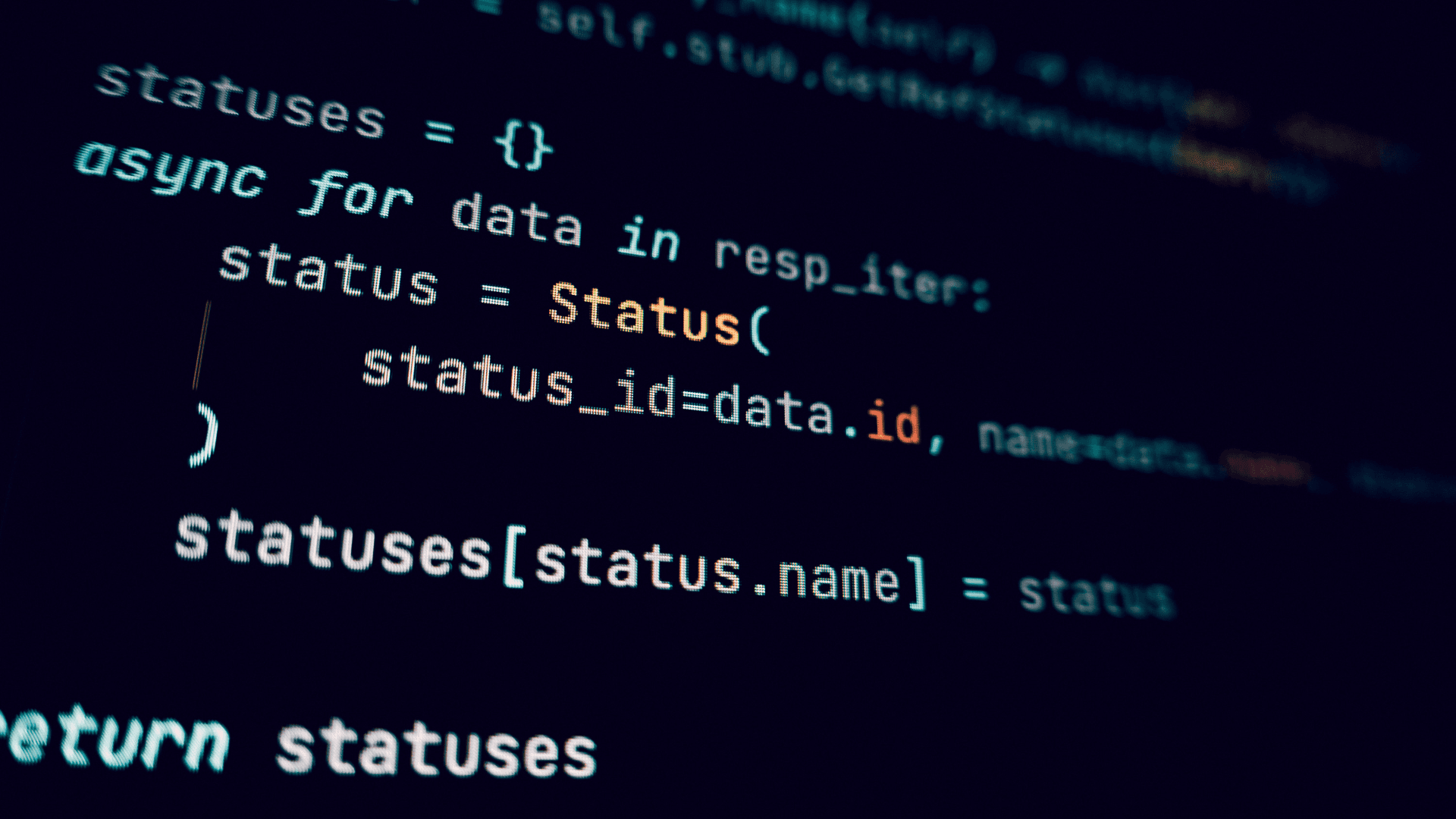

Apr 1, 2024
Transforming Network APIs
The CAMARA Project is focused on solving fragmentation by establishing a universal API layer that allows developers to build once and deploy across multiple networks.
CAMARA
Network APIs
Data Monetization
Fragmented Infrastructure
The telecommunications industry has long struggled with fragmented infrastructure, where mobile network operators (MNOs) each maintain their own isolated systems, making it difficult for developers, enterprises, and service providers to integrate and deploy applications seamlessly. This fragmentation creates inefficiencies in network operations, slows down innovation, and increases costs for businesses trying to build digital services that rely on mobile connectivity.
One of the biggest challenges has been the lack of standardized APIs that allow developers to access and leverage network capabilities across different operators. Without a common framework, businesses must integrate with each operator separately, creating a slow and expensive development process. This has led to a lack of interoperability, making it difficult for industries such as fintech, IoT, cloud computing, and digital advertising to fully utilize telecom infrastructure.
At the same time, MNOs face increasing pressure to generate new revenue streams beyond traditional voice and data services. Big Tech companies have dominated the digital ecosystem, capturing value from mobile networks without sharing the financial benefits with telecom operators. As governments introduce stricter regulations on privacy, data usage, and digital services, telecom operators have a unique opportunity to provide secure, consent-driven alternatives. However, the industry needs a unified approach to open up telecom capabilities without exposing networks to security risks or operational inefficiencies.
These challenges led to the creation of the CAMARA Project, an open-source initiative designed to provide a standardized framework for exposing network capabilities through APIs. Led by the GSMA in collaboration with the Linux Foundation, the project brings together MNOs, cloud providers, and technology companies to develop open, interoperable APIs that simplify application development across global telecom networks.

Seamless Integreation
Standardized Network APIs: The Key to Seamless Digital Integration
The CAMARA Project is focused on solving fragmentation by establishing a universal API layer that allows developers to build once and deploy across multiple networks. Instead of requiring customized integrations for each telecom provider, businesses can use CAMARA’s standardized APIs to access core network functions, such as device location, quality of service management, identity verification, and fraud detection.
This approach is particularly valuable for industries that rely on real-time network data. A fintech company, for example, can use CAMARA APIs to verify a user's identity or detect SIM swaps in real-time to prevent fraud, without needing separate integrations with each telecom operator. Similarly, IoT providers can optimize device connectivity across different networks, ensuring consistent performance and security.
By leveraging open APIs, CAMARA also enables new revenue opportunities for telecom operators. MNOs can provide businesses with premium network services, such as enhanced security, priority access for critical applications, or location-based analytics, all while maintaining compliance with data privacy regulations. This shifts telecom operators from being passive infrastructure providers to active participants in the digital economy, capturing value from the services running on their networks.
Beyond individual business benefits, CAMARA is helping reshape the competitive landscape of the telecom industry. Traditionally, MNOs have operated in silos, each developing its own proprietary solutions, but the rise of cloud-native applications and 5G services demands a more unified approach. By aligning with GSMA’s Open Gateway initiative, CAMARA ensures that telecom networks remain relevant in a world increasingly driven by cloud platforms, AI, and digital services.
The project’s open-source model encourages collaboration between telecom operators, cloud providers, and developers, accelerating the adoption of standardized APIs across global markets. This means businesses no longer need to negotiate complex partnerships with individual MNOs; they can build applications that work seamlessly across different regions and networks, reducing time to market and operational complexity.
The history of API fragmentation in telecom has slowed digital transformation, but CAMARA is changing that. By creating a universal API ecosystem, the project is not only making it easier for businesses to integrate with mobile networks but also unlocking new possibilities for telecom operators to compete in the digital economy. As the demand for secure, high-performance connectivity grows, CAMARA provides the foundation needed to scale next-generation applications and services, ensuring that telecom infrastructure remains a core driver of innovation in the years to come.

Latest Updates
(GQ® — 02)
©2024
FAQ
01
What does Centillion do?
02
How does Centillion’s API work?
03
How does Centillion help companies monetize their data?
04
What industries benefit from Centillion?
05
How does Centillion ensure compliance with global regulations?
06
What makes Centillion different from other data platforms?
07
How does Centillion improve data security and integrity?
08
How can businesses integrate Centillion’s services?


Apr 1, 2024
Transforming Network APIs
The CAMARA Project is focused on solving fragmentation by establishing a universal API layer that allows developers to build once and deploy across multiple networks.
CAMARA
Network APIs
Data Monetization
Fragmented Infrastructure
The telecommunications industry has long struggled with fragmented infrastructure, where mobile network operators (MNOs) each maintain their own isolated systems, making it difficult for developers, enterprises, and service providers to integrate and deploy applications seamlessly. This fragmentation creates inefficiencies in network operations, slows down innovation, and increases costs for businesses trying to build digital services that rely on mobile connectivity.
One of the biggest challenges has been the lack of standardized APIs that allow developers to access and leverage network capabilities across different operators. Without a common framework, businesses must integrate with each operator separately, creating a slow and expensive development process. This has led to a lack of interoperability, making it difficult for industries such as fintech, IoT, cloud computing, and digital advertising to fully utilize telecom infrastructure.
At the same time, MNOs face increasing pressure to generate new revenue streams beyond traditional voice and data services. Big Tech companies have dominated the digital ecosystem, capturing value from mobile networks without sharing the financial benefits with telecom operators. As governments introduce stricter regulations on privacy, data usage, and digital services, telecom operators have a unique opportunity to provide secure, consent-driven alternatives. However, the industry needs a unified approach to open up telecom capabilities without exposing networks to security risks or operational inefficiencies.
These challenges led to the creation of the CAMARA Project, an open-source initiative designed to provide a standardized framework for exposing network capabilities through APIs. Led by the GSMA in collaboration with the Linux Foundation, the project brings together MNOs, cloud providers, and technology companies to develop open, interoperable APIs that simplify application development across global telecom networks.

Seamless Integreation
Standardized Network APIs: The Key to Seamless Digital Integration
The CAMARA Project is focused on solving fragmentation by establishing a universal API layer that allows developers to build once and deploy across multiple networks. Instead of requiring customized integrations for each telecom provider, businesses can use CAMARA’s standardized APIs to access core network functions, such as device location, quality of service management, identity verification, and fraud detection.
This approach is particularly valuable for industries that rely on real-time network data. A fintech company, for example, can use CAMARA APIs to verify a user's identity or detect SIM swaps in real-time to prevent fraud, without needing separate integrations with each telecom operator. Similarly, IoT providers can optimize device connectivity across different networks, ensuring consistent performance and security.
By leveraging open APIs, CAMARA also enables new revenue opportunities for telecom operators. MNOs can provide businesses with premium network services, such as enhanced security, priority access for critical applications, or location-based analytics, all while maintaining compliance with data privacy regulations. This shifts telecom operators from being passive infrastructure providers to active participants in the digital economy, capturing value from the services running on their networks.
Beyond individual business benefits, CAMARA is helping reshape the competitive landscape of the telecom industry. Traditionally, MNOs have operated in silos, each developing its own proprietary solutions, but the rise of cloud-native applications and 5G services demands a more unified approach. By aligning with GSMA’s Open Gateway initiative, CAMARA ensures that telecom networks remain relevant in a world increasingly driven by cloud platforms, AI, and digital services.
The project’s open-source model encourages collaboration between telecom operators, cloud providers, and developers, accelerating the adoption of standardized APIs across global markets. This means businesses no longer need to negotiate complex partnerships with individual MNOs; they can build applications that work seamlessly across different regions and networks, reducing time to market and operational complexity.
The history of API fragmentation in telecom has slowed digital transformation, but CAMARA is changing that. By creating a universal API ecosystem, the project is not only making it easier for businesses to integrate with mobile networks but also unlocking new possibilities for telecom operators to compete in the digital economy. As the demand for secure, high-performance connectivity grows, CAMARA provides the foundation needed to scale next-generation applications and services, ensuring that telecom infrastructure remains a core driver of innovation in the years to come.

Latest Updates
(GQ® — 02)
©2024
FAQ
01
What does Centillion do?
02
How does Centillion’s API work?
03
How does Centillion help companies monetize their data?
04
What industries benefit from Centillion?
05
How does Centillion ensure compliance with global regulations?
06
What makes Centillion different from other data platforms?
07
How does Centillion improve data security and integrity?
08
How can businesses integrate Centillion’s services?


Apr 1, 2024
Transforming Network APIs
The CAMARA Project is focused on solving fragmentation by establishing a universal API layer that allows developers to build once and deploy across multiple networks.
CAMARA
Network APIs
Data Monetization
Fragmented Infrastructure
The telecommunications industry has long struggled with fragmented infrastructure, where mobile network operators (MNOs) each maintain their own isolated systems, making it difficult for developers, enterprises, and service providers to integrate and deploy applications seamlessly. This fragmentation creates inefficiencies in network operations, slows down innovation, and increases costs for businesses trying to build digital services that rely on mobile connectivity.
One of the biggest challenges has been the lack of standardized APIs that allow developers to access and leverage network capabilities across different operators. Without a common framework, businesses must integrate with each operator separately, creating a slow and expensive development process. This has led to a lack of interoperability, making it difficult for industries such as fintech, IoT, cloud computing, and digital advertising to fully utilize telecom infrastructure.
At the same time, MNOs face increasing pressure to generate new revenue streams beyond traditional voice and data services. Big Tech companies have dominated the digital ecosystem, capturing value from mobile networks without sharing the financial benefits with telecom operators. As governments introduce stricter regulations on privacy, data usage, and digital services, telecom operators have a unique opportunity to provide secure, consent-driven alternatives. However, the industry needs a unified approach to open up telecom capabilities without exposing networks to security risks or operational inefficiencies.
These challenges led to the creation of the CAMARA Project, an open-source initiative designed to provide a standardized framework for exposing network capabilities through APIs. Led by the GSMA in collaboration with the Linux Foundation, the project brings together MNOs, cloud providers, and technology companies to develop open, interoperable APIs that simplify application development across global telecom networks.

Seamless Integreation
Standardized Network APIs: The Key to Seamless Digital Integration
The CAMARA Project is focused on solving fragmentation by establishing a universal API layer that allows developers to build once and deploy across multiple networks. Instead of requiring customized integrations for each telecom provider, businesses can use CAMARA’s standardized APIs to access core network functions, such as device location, quality of service management, identity verification, and fraud detection.
This approach is particularly valuable for industries that rely on real-time network data. A fintech company, for example, can use CAMARA APIs to verify a user's identity or detect SIM swaps in real-time to prevent fraud, without needing separate integrations with each telecom operator. Similarly, IoT providers can optimize device connectivity across different networks, ensuring consistent performance and security.
By leveraging open APIs, CAMARA also enables new revenue opportunities for telecom operators. MNOs can provide businesses with premium network services, such as enhanced security, priority access for critical applications, or location-based analytics, all while maintaining compliance with data privacy regulations. This shifts telecom operators from being passive infrastructure providers to active participants in the digital economy, capturing value from the services running on their networks.
Beyond individual business benefits, CAMARA is helping reshape the competitive landscape of the telecom industry. Traditionally, MNOs have operated in silos, each developing its own proprietary solutions, but the rise of cloud-native applications and 5G services demands a more unified approach. By aligning with GSMA’s Open Gateway initiative, CAMARA ensures that telecom networks remain relevant in a world increasingly driven by cloud platforms, AI, and digital services.
The project’s open-source model encourages collaboration between telecom operators, cloud providers, and developers, accelerating the adoption of standardized APIs across global markets. This means businesses no longer need to negotiate complex partnerships with individual MNOs; they can build applications that work seamlessly across different regions and networks, reducing time to market and operational complexity.
The history of API fragmentation in telecom has slowed digital transformation, but CAMARA is changing that. By creating a universal API ecosystem, the project is not only making it easier for businesses to integrate with mobile networks but also unlocking new possibilities for telecom operators to compete in the digital economy. As the demand for secure, high-performance connectivity grows, CAMARA provides the foundation needed to scale next-generation applications and services, ensuring that telecom infrastructure remains a core driver of innovation in the years to come.

FAQ
What does Centillion do?
How does Centillion’s API work?
How does Centillion help companies monetize their data?
What industries benefit from Centillion?
How does Centillion ensure compliance with global regulations?
What makes Centillion different from other data platforms?
How does Centillion improve data security and integrity?
How can businesses integrate Centillion’s services?



